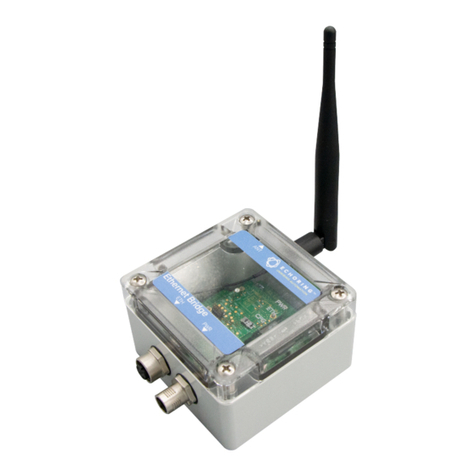
http://echoring.com
Revision: 1.2
3 Product Information
3.1 Intended Use of the Product
The EchoRing Ethernet Bridge (device) enables a timecritical and reliable wireless link
between Ethernetbased industrial protocol devices. It can be employed for:
• Replacing cablebased network infrastructure with a wireless connection in machinery,
vehicles and devices, enabling simplified infrastructure and flexible operations.
• Replacing network cables between moving structures or components in machinery,
vehicles and devices in order to reduce weight, size and use of installation space, as
well as wear and tear on network infrastructure.
ATTENTION — This radio device is intended for transmitting wireless data. It is furthermore intended to
be used for low latency and/or high reliability data communications. When using device, be mindful of the
general behavior and physics of the wireless channel. Abrupt or predictable changes in the operational
environment, such as movement of people or objects, and the presence of interfering devices, can result in
reduced wireless signal quality and failed data transmissions. Thus, when used in critical applications,
where the result of poor wireless connectivity can cause severe human injury or economic
damage, intended operations cannot rely solely on this device. A comprehensive system solution,
such as an integrated wired failsafe in case of poor wireless connectivity, must be installed and tested to
the level of intended application’s importance.
!
3.2 Versions of this Product
• EREB 1000M (EU version)
• EREB 1001M (US version) – NOT COVERED BY THIS DOCUMENTATION
3.3 Conformity/Country Approvals
The device complies with these essential EU directives, which include modification:
• 2011/65/EU Restriction of the use of certain hazardous substances (RoHS), and
• 2014/53/EU Radio equipment (RED).
Additional information (e.g. declaration of conformity, documents, test reports, restrictions,
etc.) can be found on www.echoring.com.
© by R3 – Reliable Realtime Radio Page 3 of 11 3. Product Information




























